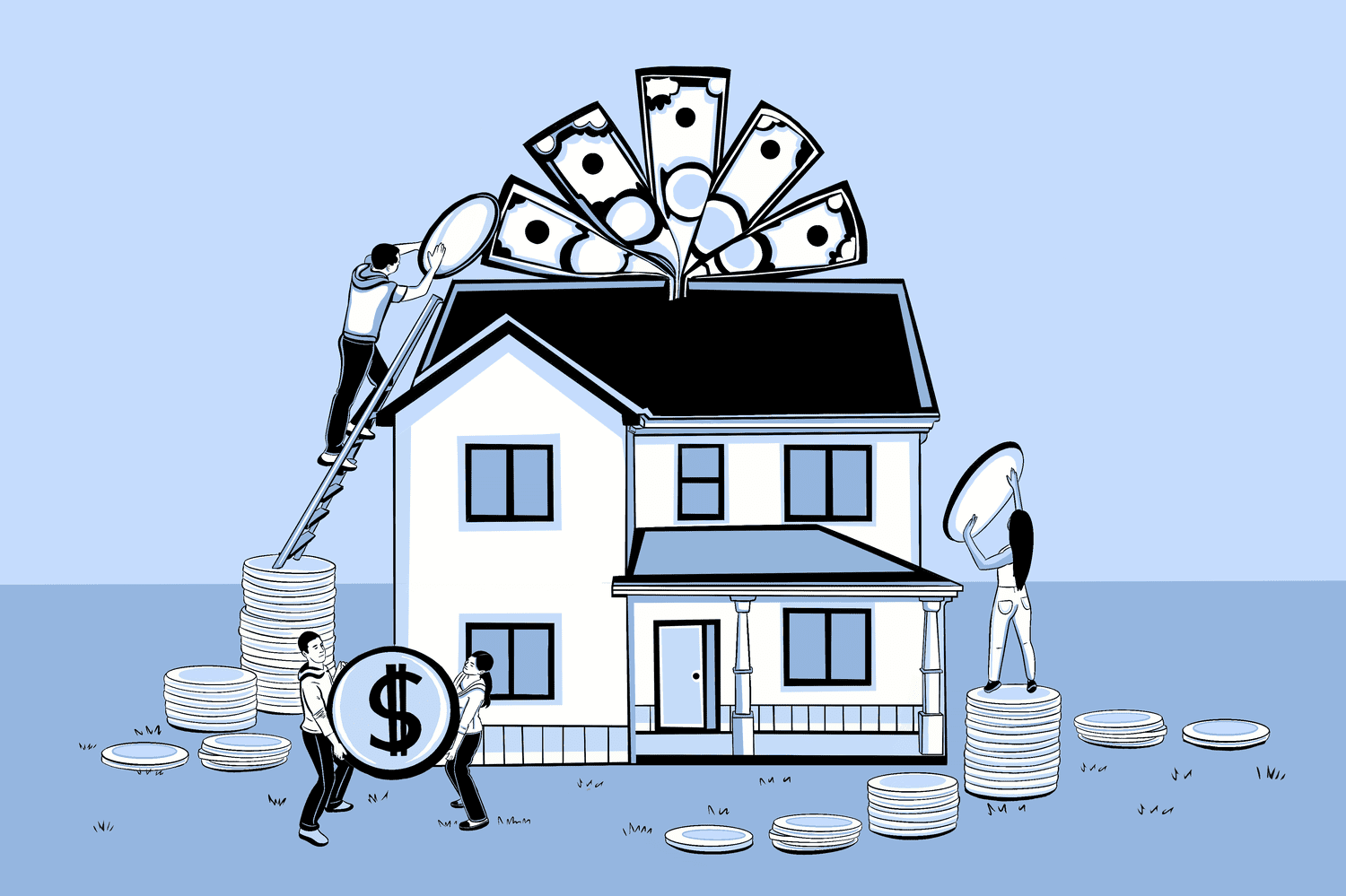Net-Zero Energy Buildings: Sustainable Solutions for Construction
Net-zero energy buildings are a new trend in sustainable construction that aims to reduce the carbon footprint of buildings. These buildings are designed to produce as much energy as they consume during a year, making them highly efficient and environmentally friendly. With the increasing global concern for climate change, net-zero energy buildings are becoming more popular as a way to reduce greenhouse gas emissions.
The achievement of net-zero energy buildings requires not only energy efficiency measures to save energy but also renewable energy and other technologies to meet energy demands. This can include the use of solar panels, wind turbines, and geothermal systems to generate electricity and heat. The design of the building itself can also play a crucial role in reducing energy consumption, such as using insulation and efficient lighting systems.
Net-zero energy buildings are not only beneficial for the environment but can also provide financial benefits to the building owners. By producing their own energy, these buildings can save money on energy bills and potentially even generate income by selling excess energy back to the grid. As the technology and design of net-zero energy buildings continue to improve, they are becoming a more viable and attractive option for sustainable construction.
Principles of Net-Zero Energy Building Design
Designing a Net-Zero Energy Building (NZEB) requires careful planning and consideration of various factors. The following principles are essential to achieve an efficient and sustainable NZEB:
1. Energy Efficiency
The first principle of NZEB design is to focus on energy efficiency. This involves reducing the amount of energy required to operate the building by implementing measures such as insulation, air sealing, and high-performance windows. Energy-efficient lighting and appliances can also help to reduce energy consumption.
2. Renewable Energy
The second principle of NZEB design is to incorporate renewable energy sources to meet the building’s energy needs. This includes solar panels, wind turbines, and geothermal systems. A combination of these sources can be used to ensure that the building produces as much energy as it consumes.
3. Passive Design
The third principle of NZEB design is to incorporate passive design strategies. This involves designing the building to take advantage of natural light and ventilation, which can significantly reduce the need for artificial lighting and HVAC systems.
4. Building Envelope
The fourth principle of NZEB design is to focus on the building envelope. This includes the walls, roof, windows, and doors, which can significantly impact the building’s energy efficiency. High-performance insulation, air sealing, and windows can help to reduce energy consumption and improve overall comfort.
5. Monitoring and Maintenance
The final principle of NZEB design is to implement a monitoring and maintenance plan. This involves regularly monitoring the building’s energy consumption and identifying areas for improvement. Proper maintenance of the building’s systems and equipment can also help to ensure that the building operates efficiently over time.
By incorporating these principles into the design of a Net-Zero Energy Building, you can achieve a sustainable, efficient, and comfortable building that produces as much energy as it consumes.
Technologies Enabling Net-Zero Energy Buildings
To achieve net-zero energy buildings, various technologies have been developed to optimize energy consumption and production. In this section, we will discuss some of the most important technologies enabling net-zero energy buildings.
Solar Power Systems
Solar power systems are one of the most common technologies used in net-zero energy buildings. They convert sunlight into electricity, which can be used to power the building. Solar panels can be installed on the roof or on the walls of the building, and the electricity generated can be used to power lighting, heating, and cooling systems.
Energy Storage Solutions
Energy storage solutions are essential for net-zero energy buildings, as they allow excess energy to be stored for later use. Batteries are the most common type of energy storage system used in net-zero energy buildings. They store excess energy generated by solar panels during the day and release it at night when the demand for electricity is higher.
High-Performance Building Envelopes
High-performance building envelopes are designed to reduce the amount of energy needed to heat and cool a building. They are made of materials that provide better insulation than traditional building materials. This reduces the amount of energy needed to maintain a comfortable temperature inside the building.
HVAC Innovations for Energy Efficiency
Heating, ventilation, and air conditioning (HVAC) systems are essential for maintaining a comfortable temperature inside the building. However, they can also be a significant source of energy consumption. To reduce energy consumption, HVAC systems in net-zero energy buildings are designed to be more efficient. For example, they may use heat recovery systems to reuse heat generated by the HVAC system.
In conclusion, net-zero energy buildings are becoming increasingly popular as people look for more sustainable solutions for construction. Technologies such as solar power systems, energy storage solutions, high-performance building envelopes, and HVAC innovations are essential for achieving net-zero energy buildings. By implementing these technologies, we can reduce our reliance on fossil fuels and move towards a more sustainable future.
Sustainable Construction Materials
When constructing net-zero energy buildings, it is essential to use sustainable materials that have a low environmental impact. Here are two types of sustainable construction materials that you can use:
Recycled and Renewable Materials
Using recycled materials is an excellent way to reduce waste and lower greenhouse gas emissions. Recycled materials can be used for various building components, such as flooring, roofing, and insulation. For instance, recycled steel is an excellent choice for framing, and recycled plastic can be used for insulation.
Renewable materials are another sustainable option for construction. Renewable materials are made from natural resources that can be replenished, such as bamboo, cork, and wood. These materials are not only eco-friendly but also durable, and they can add a unique aesthetic to your building.
Low-Emission Building Products
Low-emission building products are materials that have low levels of volatile organic compounds (VOCs). VOCs are harmful chemicals that can be released into the air and cause health problems. When selecting low-emission building products, consider products such as low-VOC paint, adhesives, and sealants.
In addition to low-emission building products, you can also choose materials that have been certified by independent organizations such as the Forest Stewardship Council (FSC) or the Cradle to Cradle Products Innovation Institute. These certifications ensure that the materials used in your building are sustainably sourced and produced, and they meet high environmental standards.
By using recycled and renewable materials and low-emission building products, you can reduce the environmental impact of your construction project and create a more sustainable building that contributes to a greener future.
Building Energy Modeling and Simulation
When designing a Net-Zero Energy Building (NZEB), it is important to use Building Energy Modeling (BEM) and Simulation tools to help optimize the building’s energy performance. BEM software can create a virtual model of the building and simulate its energy performance, allowing you to identify areas where energy efficiency can be improved.
BEM software can be used to model a variety of building components, such as walls, roofs, windows, and HVAC systems. By inputting data such as building orientation, insulation levels, and glazing type, the software can calculate the building’s energy consumption and identify areas where energy efficiency can be improved.
One of the key benefits of using BEM software is that it can help you optimize the building’s energy performance before construction even begins. By simulating different design options and analyzing the results, you can identify the most energy-efficient design for your building.
BEM software can also be used to simulate the building’s energy performance over time, allowing you to identify areas where energy efficiency can be improved during operation. By analyzing the building’s energy consumption data, you can identify areas where energy efficiency can be improved and implement changes to reduce energy consumption.
Overall, BEM and Simulation tools are essential for designing and optimizing the energy performance of Net-Zero Energy Buildings. By using these tools, you can create a more sustainable building that is both energy-efficient and cost-effective to operate.
Policy Frameworks and Incentives
As the world shifts towards sustainable construction practices, governments are implementing policy frameworks and financial incentives to encourage the adoption of net-zero energy buildings (NZEBs). These policies and incentives aim to provide a favorable environment for the construction of NZEBs, thereby reducing the carbon footprint of buildings and contributing towards a greener future.
Government Policies
Governments across the globe are introducing policies to encourage the construction of NZEBs. For instance, the European Union has set a target of achieving NZEB standards for all new buildings by 2020, and for all buildings to be NZEBs by 2050. In the United States, California has implemented a policy that requires all new residential constructions to be NZEBs by 2020, and all new commercial constructions to be NZEBs by 2030. These policies are aimed at reducing carbon emissions and promoting sustainable construction practices.
Financial Incentives
In addition to policies, governments are also offering financial incentives to encourage the construction of NZEBs. These incentives include tax credits, grants, and rebates for builders and developers who construct NZEBs. For instance, the United States federal government offers a tax credit of up to 30% of the cost of constructing a NZEB. Similarly, the Australian government offers grants of up to AUD 500,000 to builders and developers who construct NZEBs. These incentives aim to reduce the financial burden of constructing NZEBs and promote sustainable construction practices.
In conclusion, policy frameworks and financial incentives are crucial in promoting the adoption of sustainable construction practices such as NZEBs. Governments across the globe are implementing policies and incentives to encourage the construction of NZEBs, thereby reducing the carbon footprint of buildings and contributing towards a greener future.
Case Studies of Net-Zero Energy Buildings
Net-zero energy buildings are becoming increasingly popular as a sustainable solution for construction. These buildings are designed to produce as much energy as they consume, resulting in a net-zero energy balance. This section will explore a few case studies of net-zero energy buildings to showcase their feasibility and effectiveness.
The Adam Joseph Lewis Center for Environmental Studies
The Adam Joseph Lewis Center for Environmental Studies, located on the Oberlin College campus in Oberlin, Ohio, is an excellent example of a net-zero energy site energy building. The Center was explicitly conceived as an integrated building-landscape system that would continue to change and improve in performance over time. It houses classroom and office space, an auditorium, a small library, and a café.
The Center’s design includes innovative features such as a green roof, a graywater system, and a photovoltaic array. The building’s energy consumption is minimized through passive solar design, natural ventilation, and daylighting. The photovoltaic array generates enough electricity to meet the building’s energy needs, resulting in a net-zero energy balance.
The Richardsville Elementary School
The Richardsville Elementary School in Kentucky is another excellent example of a net-zero energy building. The building was designed to use 75% less energy than a typical school building and generate all of its energy on-site through renewable sources. The building’s design includes features such as a geothermal heating and cooling system, a rainwater harvesting system, and a photovoltaic array.
The school’s energy consumption is minimized through passive solar design, daylighting, and efficient lighting and HVAC systems. The photovoltaic array generates enough electricity to meet the building’s energy needs, resulting in a net-zero energy balance. The Richardsville Elementary School has won several awards for its innovative design and sustainable features.
The Center for Sustainable Landscapes
The Center for Sustainable Landscapes in Pittsburgh, Pennsylvania, is a net-zero energy building that was designed to be the greenest building in the world. The building’s design includes features such as a green roof, a rainwater harvesting system, and a photovoltaic array.
The building’s energy consumption is minimized through passive solar design, natural ventilation, and efficient lighting and HVAC systems. The photovoltaic array generates enough electricity to meet the building’s energy needs, resulting in a net-zero energy balance. The Center for Sustainable Landscapes has won several awards for its innovative design and sustainable features.
These case studies demonstrate that net-zero energy buildings are a feasible and effective solution for sustainable construction. By minimizing energy consumption and generating renewable energy on-site, these buildings can achieve a net-zero energy balance, reducing their environmental impact and saving money on energy costs.
Challenges in Achieving Net-Zero Energy Status
Achieving net-zero energy status for buildings is an ambitious goal that requires a lot of effort and investment. While it is possible to achieve net-zero energy status, there are several challenges that must be overcome. Here are some of the challenges that you may encounter when trying to achieve net-zero energy status for your building:
1. High Upfront Costs
One of the biggest challenges in achieving net-zero energy status is the high upfront costs involved. Building a net-zero energy building requires the installation of energy-efficient systems, renewable energy systems, and energy storage systems. These systems can be expensive, and the initial investment may be difficult to recoup in the short term. However, it’s important to note that the long-term savings from reduced energy bills and maintenance costs can offset the initial investment.
2. Limited Availability of Skilled Labor
Another challenge in achieving net-zero energy status is the limited availability of skilled labor. Building a net-zero energy building requires specialized knowledge and skills, and there may not be enough skilled workers available to complete the project. This can lead to delays and increased costs.
3. Climate and Site Limitations
The climate and site limitations can also pose a challenge to achieving net-zero energy status. For example, buildings in cold climates may require more energy to heat, while buildings in hot climates may require more energy to cool. Additionally, buildings located in areas with limited renewable energy resources may find it difficult to generate enough energy to achieve net-zero energy status.
4. Lack of Awareness and Support
Finally, the lack of awareness and support can also pose a challenge to achieving net-zero energy status. Many building owners and developers may not be aware of the benefits of net-zero energy buildings, and may not be willing to invest in them. Additionally, there may be a lack of government incentives and support for net-zero energy buildings, which can make it more difficult to achieve this goal.
Despite these challenges, it is possible to achieve net-zero energy status for buildings with the right strategies and investments. By addressing these challenges and implementing energy-efficient and renewable energy systems, we can create a more sustainable future for our buildings and our planet.
Lifecycle Assessment and Environmental Impact
When constructing a net-zero energy building (NZEB), it is important to consider the environmental impact of the materials and processes used throughout the building’s life cycle. A lifecycle assessment (LCA) can help evaluate the environmental impact of a building from cradle to grave, including the extraction and transportation of raw materials, the manufacturing process, the construction process, the use phase, and the end-of-life phase.
Using sustainable materials and minimizing waste during construction can significantly reduce the environmental impact of a building. For example, using recycled or salvaged materials can reduce the amount of waste sent to landfills and the energy required to produce new materials. Additionally, using materials with a low embodied energy, such as straw bale or rammed earth, can reduce the carbon footprint of a building.
During the use phase of a building, energy consumption is a major contributor to its environmental impact. NZEBs are designed to produce as much energy as they consume over the course of a year, typically through the use of renewable energy sources such as solar panels or wind turbines. By generating their own energy, NZEBs can reduce their reliance on non-renewable sources and minimize their carbon footprint.
At the end-of-life phase, it is important to consider the disposal and recycling of materials used in the building. By designing a building with materials that can be easily disassembled and recycled, the environmental impact of the building can be further minimized.
Overall, a lifecycle assessment can help ensure that a net-zero energy building is truly sustainable and has a minimal environmental impact throughout its entire life cycle.
Future Trends in Net-Zero Energy Building Technologies
As the world continues to shift towards sustainable construction practices, there are several emerging trends in net-zero energy building technologies that will shape the future of the industry. Here are some of the most promising developments:
1. Smart Building Technologies for Energy Optimization
Smart building technologies are becoming increasingly popular in net-zero energy buildings. These systems can monitor and adjust energy use based on occupancy, weather patterns, and other factors to optimize energy consumption. For example, smart thermostats can automatically adjust the temperature based on the number of occupants in a room, while lighting systems can adjust brightness based on natural light levels.
2. Advanced Building Envelope Systems
The building envelope is the physical barrier between the interior and exterior of a building. Advanced building envelope systems are designed to minimize energy loss and maximize energy efficiency. This includes materials such as insulated concrete forms, structural insulated panels, and advanced glazing systems.
3. Renewable Energy Systems
Renewable energy systems are a critical component of net-zero energy buildings. These systems can include solar panels, wind turbines, and geothermal systems. As the cost of renewable energy continues to decrease, these systems are becoming more accessible and cost-effective.
4. Energy Storage Systems
Energy storage systems are becoming increasingly important in net-zero energy buildings. These systems can store excess energy generated by renewable energy systems during times of low demand, and release that energy during times of high demand. This helps to balance the energy load and ensure that the building remains net-zero over the course of the year.
In conclusion, net-zero energy building technologies are rapidly evolving, and these emerging trends are poised to shape the future of sustainable construction. By incorporating these technologies into your building design, you can help to create a more efficient, sustainable, and cost-effective building.
Integration of Smart Grids and Net-Zero Energy Buildings
Smart grids are an essential component of net-zero energy buildings (NZEBs) as they allow for the optimization of energy usage and generation. Your NZEB can be connected to the smart grid, allowing for real-time monitoring and analysis of energy consumption. This information can be used to adjust energy generation and usage to optimize energy efficiency.
One of the key features of smart grids is the ability to integrate renewable energy sources, such as solar panels and wind turbines, into the energy grid. This integration allows for the seamless transfer of energy between the NZEB and the grid, ensuring that the building always has access to a reliable source of energy.
Smart grids also enable demand response programs, which allow your NZEB to adjust its energy usage based on the current energy demand. This means that your building can reduce its energy consumption during peak demand periods, helping to alleviate stress on the energy grid and reduce the risk of blackouts.
In addition to the benefits for NZEBs, smart grids also have broader benefits for the energy grid as a whole. By optimizing energy usage and generation, smart grids can reduce energy waste and improve the overall efficiency of the grid. This can help to reduce the overall cost of energy and ensure that the grid is more resilient to disruptions.
Overall, the integration of smart grids and NZEBs is a crucial step towards a more sustainable and efficient energy system. By leveraging the power of smart technology, you can optimize your energy usage and reduce your environmental impact, while also benefiting from a more reliable and cost-effective energy supply.
Public Awareness and Education Strategies
To achieve net-zero energy buildings, public awareness and education strategies are crucial. The general public needs to understand the benefits of net-zero energy buildings and the role they play in sustainable construction. Education on the design, construction, and maintenance of net-zero energy buildings is also essential for building owners, architects, and engineers.
One effective strategy is to provide case studies and success stories of net-zero energy buildings. This can be done through websites, brochures, and other marketing materials. The use of infographics and videos can also be helpful in explaining the benefits of net-zero energy buildings.
Another strategy is to provide training and education programs for building owners, architects, and engineers. These programs can cover topics such as energy-efficient design, renewable energy technologies, and sustainable building materials. Certification programs can also be established to recognize those who have completed the training and demonstrate their knowledge and skills in sustainable construction.
It’s also important to involve the community in the design and construction process of net-zero energy buildings. This can be done through public meetings and workshops, where community members can provide input on the design and express their concerns. This approach fosters a sense of ownership and pride in the building, leading to greater support for sustainable construction practices.
Overall, public awareness and education strategies are essential for achieving net-zero energy buildings. By providing education and training programs, case studies, and involving the community in the design process, we can promote sustainable construction practices and create a more sustainable future.
Frequently Asked Questions
What are the primary design strategies for constructing net-zero energy buildings?
The primary design strategies for constructing net-zero energy buildings include optimizing building energy efficiency, using renewable energy sources, and integrating energy storage systems. Building energy efficiency can be improved by using high-performance insulation and building materials, optimizing building orientation and landscaping, and reducing air infiltration. Integrating renewable energy sources such as solar panels, wind turbines, and geothermal systems can help offset energy consumption. Energy storage systems such as batteries and thermal storage tanks can store excess energy for later use.
How can renewable energy be integrated into net-zero energy building projects?
Renewable energy can be integrated into net-zero energy building projects by using solar panels, wind turbines, and geothermal systems. Solar panels can be installed on the roof or walls of a building to capture the energy from the sun and convert it into electricity. Wind turbines can be installed on the roof or in the surrounding area to capture wind energy. Geothermal systems can be used to capture the heat from the earth and use it to heat and cool the building.
What are the most effective insulation and building materials for net-zero construction?
The most effective insulation and building materials for net-zero construction are those that have high thermal resistance and low embodied energy. Examples of effective insulation materials include cellulose, spray foam, and rigid foam. Building materials such as concrete, steel, and wood can be used, but their embodied energy should be considered. Embodied energy refers to the energy required to extract, manufacture, transport, and install a material.
How do building codes and standards influence the development of net-zero energy buildings?
Building codes and standards influence the development of net-zero energy buildings by setting minimum energy efficiency requirements for buildings. These codes and standards provide guidance on building design, construction, and operation. Compliance with building codes and standards is mandatory, and failure to comply can result in fines and other penalties. Building codes and standards are regularly updated to reflect changes in technology and best practices.
What role does building orientation and landscaping play in achieving net-zero energy status?
Building orientation and landscaping play a significant role in achieving net-zero energy status. Proper building orientation can maximize the use of natural light and reduce the need for artificial lighting. Landscaping can be used to provide shading and reduce solar heat gain. Trees and vegetation can also be used to reduce air infiltration and provide natural cooling.
What are the challenges and solutions for maintaining indoor air quality in net-zero energy buildings?
The challenges for maintaining indoor air quality in net-zero energy buildings include reducing air infiltration while providing adequate ventilation. Solutions include using high-performance air filters, using energy recovery ventilators, and using low-emission building materials. Proper maintenance and cleaning of HVAC systems is also important to maintain indoor air quality.





